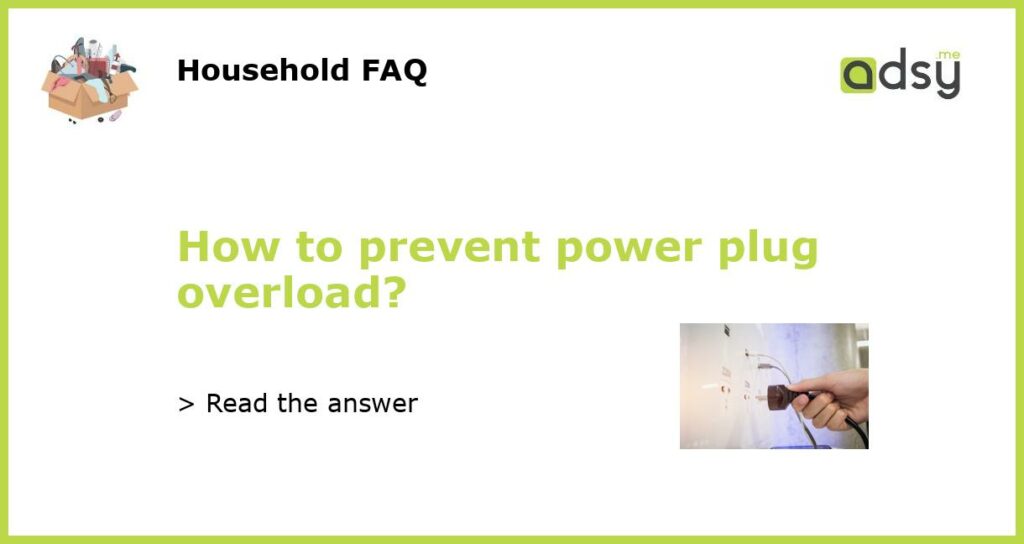Understanding the Causes of Power Plug Overload
Power plug overload is a common issue that many people face, but it can be easily prevented with a little understanding of the causes. The primary cause of overload is when too many electrical devices are connected to a single power socket. This can happen when people try to plug in multiple devices using power strips or extension cords. Another cause is when a single device draws too much power, exceeding the maximum capacity of the socket.
In addition to these causes, power plug overload can also occur when the wiring in your home is not capable of handling the electrical load. This is especially common in older homes where the electrical system has not been updated to meet modern demands.
Choosing the Right Power Strip or Extension Cord
One of the key ways to prevent power plug overload is by using the right power strip or extension cord. When choosing a power strip or extension cord, it is important to look for one that has a higher amperage rating than the devices you plan to plug in. The amperage rating indicates how much current the power strip or extension cord can handle. Choosing one with a higher rating ensures that it can safely handle the electrical load without becoming overloaded.
It is also important to choose a power strip or extension cord that has overload protection. This can come in the form of a circuit breaker or a surge protector. These safety features are designed to automatically cut off power to the devices connected to the power strip or extension cord if the load exceeds the maximum capacity, preventing overload and the risk of electrical fires.
Distributing the Load Across Multiple Power Sockets
Another effective way to prevent power plug overload is by distributing the load across multiple power sockets. Instead of plugging in all your devices to a single power strip or extension cord, spread them out and connect them to different power sockets. This helps to ensure that the electrical load is evenly distributed, reducing the risk of overload.
In cases where there are not enough power sockets available, consider hiring a licensed electrician to install additional outlets in your home. This will eliminate the need for power strips or extension cords and provide you with enough sockets to safely power all your devices.
Using Power Management Strategies
To further prevent power plug overload, it is important to implement power management strategies. This involves being aware of the power requirements of your devices and making conscious decisions about which devices to use simultaneously.
For example, if you have multiple high-power devices such as air conditioners or heaters, avoid using them at the same time to prevent overloading the power sockets. Instead, stagger their use throughout the day to distribute the load more evenly.
Additionally, consider unplugging devices that are not in use. Many electrical devices continue to draw power even when they are turned off, contributing to the overall load on the power sockets. By unplugging these devices when they are not in use, you can reduce the risk of overload.
Checking and Maintaining the Electrical System
Regularly checking and maintaining the electrical system in your home is essential in preventing power plug overload. It is important to have a licensed electrician inspect the wiring, outlets, and circuit breakers to ensure they are in good condition and capable of handling the electrical load.
If any issues are identified, such as damaged wiring or overloaded circuits, it is crucial to have them repaired or upgraded promptly. This will help prevent power plug overload and reduce the risk of electrical hazards.
In conclusion, preventing power plug overload is a matter of understanding the causes, choosing the right equipment, distributing the load, implementing power management strategies, and maintaining the electrical system. By following these guidelines, you can ensure the safety of your electrical devices and reduce the risk of overload and electrical fires.






